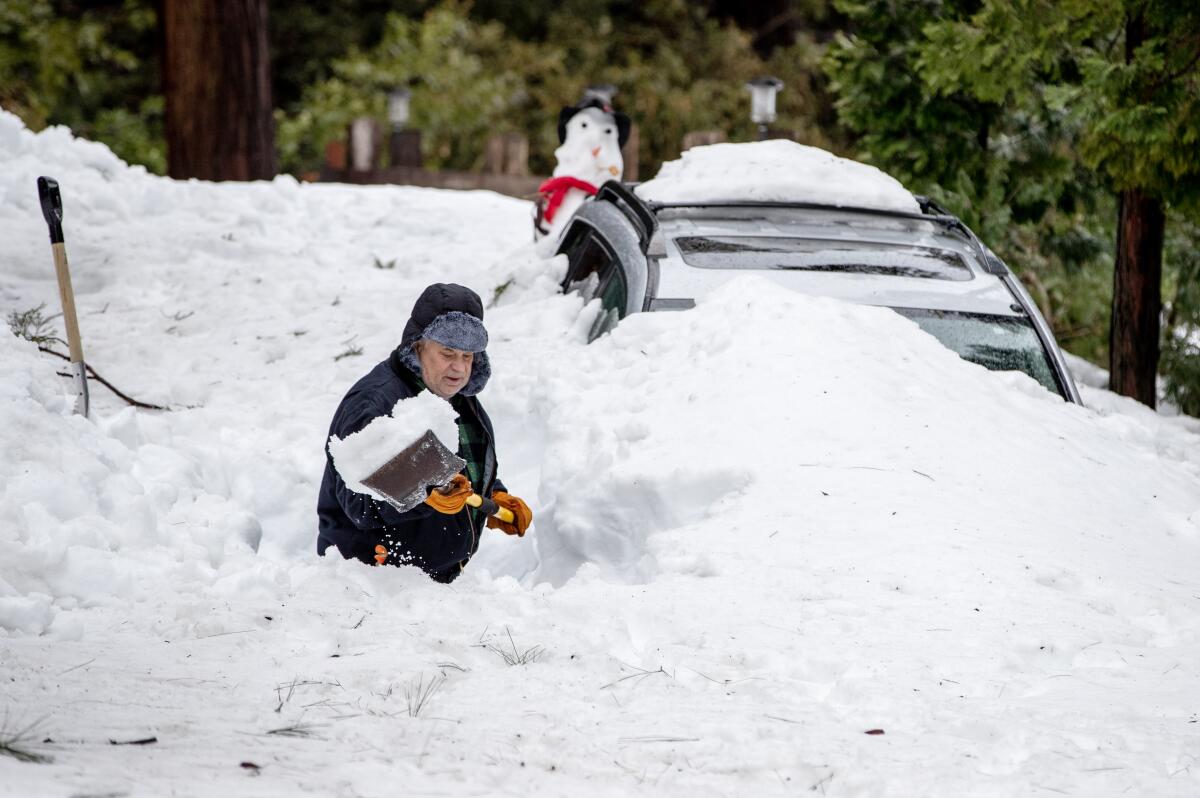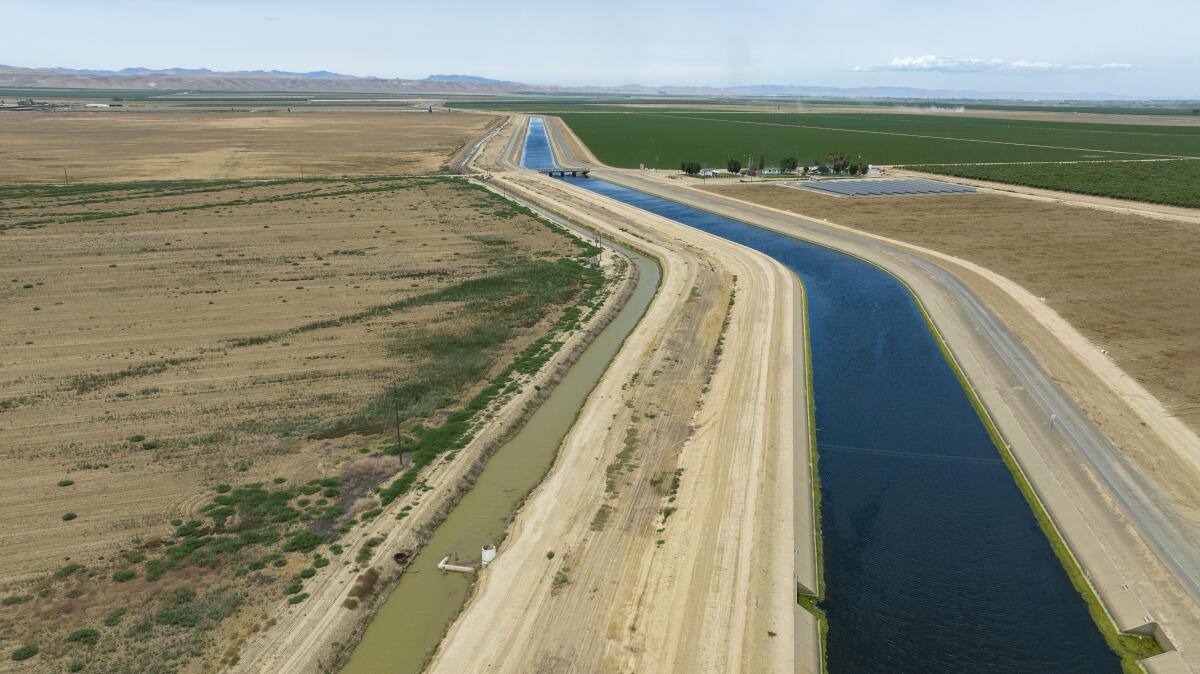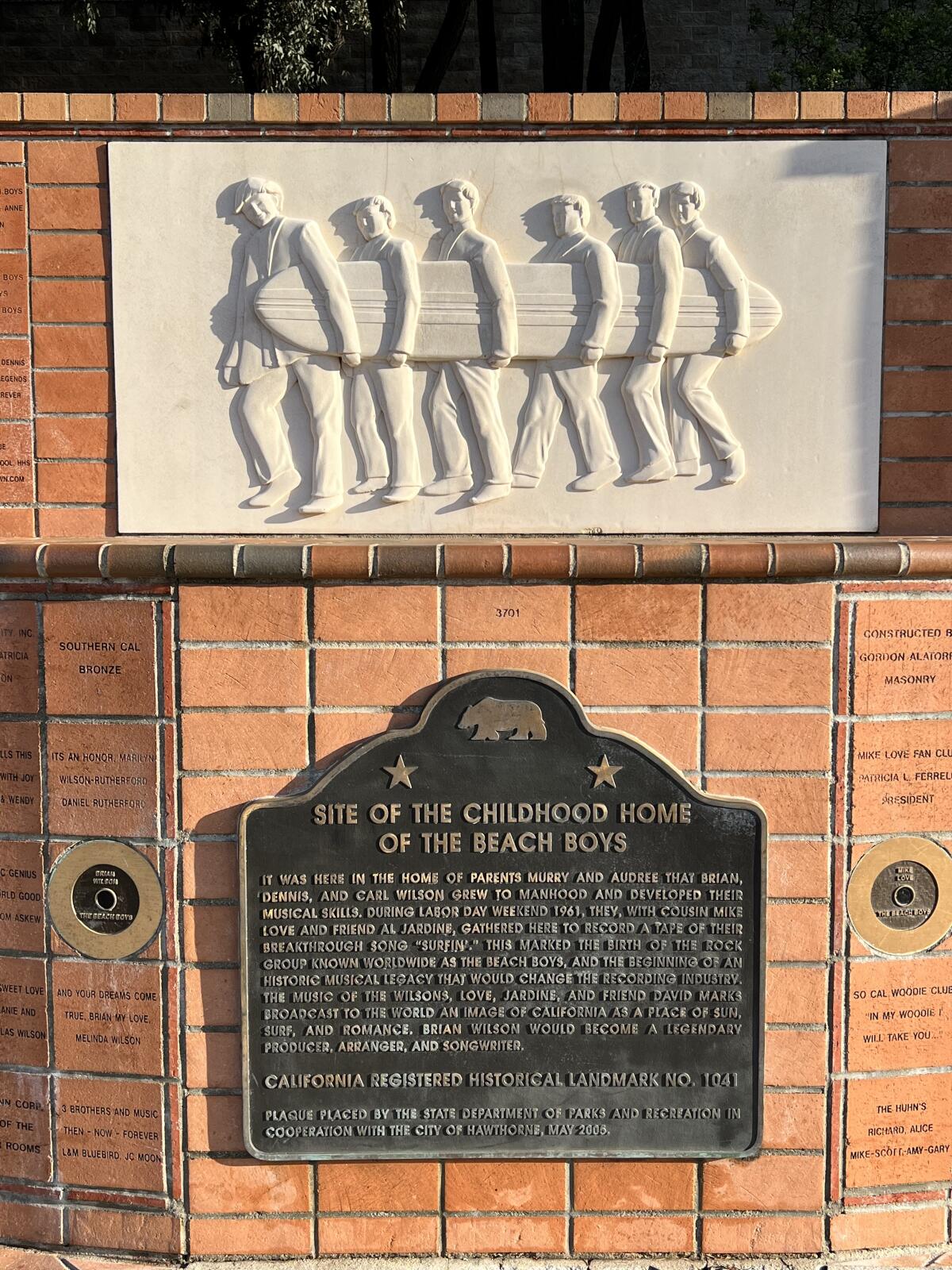A deluge of snow, then a delay in aid in the San Bernardino Mountains

- Share via
Good morning, and welcome to the Essential California newsletter. It’s Tuesday, March 7.
Nearly two weeks after historic winter storms hit Southern California, some mountain residents remain stranded and waiting for help.
More than 100 inches of snow fell in the San Bernardino Mountains over the past several days alone, adding to feet of snow that has blocked off roads in and out of communities and hindered efforts to deliver vital supplies and medical aid.
The snowstorms have passed, but now there’s a growing swirl of frustration as residents continue to wait for help — some for more than 10 days — as they run low on food and medicine.
My colleagues Nathan Solis, Summer Lin and Robert J. Lopez have been covering the “snow siege” and write:
The slow pace of clearing roads has become a source of growing anger in mountain communities. Making matters worse, residents have endured gas leaks, fires and roof cave-ins due to the snow, and authorities have struggled to give aid.
Gov. Gavin Newsom declared a state of emergency last week for San Bernardino and several other counties hit hard by severe winter weather.
A variety of state and local agencies have crews assisting in efforts to clear roads and get to residents in need, using hand shovels in some cases, but also machinery like road graders, front-end loaders, dump trucks, snowplows and snow blowers. The California National Guard is also in the mountains helping with relief efforts, according to Newsom’s office.
Volunteers are also stepping up to help, like Crestline resident Max Strawn. He told Times reporters this weekend that he waded through waist-high snow to get groceries to people with disabilities and elderly residents in the area.
“These are only the ones we know about,” he said. “I know there’s people we’re missing.”
Efforts by one nonprofit to bring supplies in by helicopter were shut down Friday by county officials, who cited safety concerns.

So what’s behind the delays?
Officials in San Bernardino County have said they were unprepared for the back-to-back winter storms that dropped up to 12 feet of snow in mountain towns. Blizzard warnings, which had not been issued in nearly 35 years, went out within 36 hours of the storms hitting the mountains, which officials said did not give them enough time to obtain the equipment they needed.
The usual snowplows couldn’t handle the historic levels of snowfall. Over the last week, Running Springs received 12 feet, Big Bear Lake 11 feet and Lake Arrowhead a little over 9 feet, the National Weather Service reported.
On Monday afternoon, regional Caltrans officials announced that certain routes would be reopened for residents only.
“At this time, if you are a nonresident, please visit the mountains when conditions have improved,” officials wrote on Facebook. “We ask for your cooperation in giving local communities time to clean-up, recover and make progress in their areas before your visit.”
And now, here’s what’s happening across California:
Note: Some of the sites we link to may limit the number of stories you can access without subscribing.
L.A. STORIES
Donors are stepping up to fund suspended L.A. City Councilmember Mark Ridley-Thomas’ defense against bribery and corruption charges. So far they’ve raised nearly $1.5 million, allowing Ridley-Thomas to hire elite attorneys who have won courtroom victories for Google, Kaiser Permanente and other major companies. Los Angeles Times
Who will take over Nury Martinez’s former L.A. City Council seat? Seven people are running in the April 4 special election to represent San Fernando Valley neighborhoods. We have a guide to the race. Los Angeles Times
Check out "The Times" podcast for essential news and more
These days, waking up to current events can be, well, daunting. If you’re seeking a more balanced news diet, “The Times” podcast is for you. Gustavo Arellano, along with a diverse set of reporters from the award-winning L.A. Times newsroom, delivers the most interesting stories from the Los Angeles Times every Monday, Wednesday and Friday. Listen and subscribe wherever you get your podcasts.
POLITICS AND GOVERNMENT
A law that went into effect this year gave California farmworkers the right to vote for unions by mail. But that law is expected to be amended this year, which could undermine union advocates’ progress. CalMatters
The Golden State’s arcane water rights system is facing scrutiny from a growing number of water experts, lawmakers, environmental groups and tribes, who are calling for reform. “The whole water rights system sits on a foundation of racism and violence,” one former water management official said. Los Angeles Times

Rodney “Blair” Stewart is the first Black city councilmember to serve in the Orange County city of Brea. That’s a milestone for the former “sundown town” with a history of racial covenants. Los Angeles Times
CRIME, COURTS AND POLICING
San Diego is hosting some high-profile legal fights over California gun laws. U.S. District Judge Roger Benitez is preparing to rule — or re-rule — on four pending Second Amendment challenges, including cases that could affect California’s assault weapons ban, and restrictions on ammunition purchases and high-capacity magazines. San Diego Union-Tribune
As data point to a rise in hate crimes in California, a new state bill seeks to create a special unit to combat the issue. Assembly Bill 1079 would establish a Hate Crimes Intervention Unit within the state’s public health department. The Sacramento Bee
Support our journalism
HEALTH AND THE ENVIRONMENT
California will cut ties with Walgreens, Gov. Gavin Newsom announced Monday, following the the company’s decision to stop selling abortion medication in 20 Republican-controlled states. Right now it’s not clear what severing ties will look like. Newsom aides said the administration has just started to review business relationships between Walgreens and the state, including MediCal and Covered California contracts. Los Angeles Times
An area of scenic, ocean-front Rancho Palos Verde has been creeping even closer to the Pacific. For decades, the soggy land of Portuguese Bend has been sliding, threatening homes, roads and other infrastructure. Now city officials have a $25 million plan to keep the ground in place. Los Angeles Times
CEQA has been in the news after a group of homeowners used the law (short for the California Environmental Quality Act) to delay a plan to build more housing for UC Berkeley students. Gov. Newsom said the law has been weaponized by”NIMBYs” to block much-needed housing and vowed to help change it. Here’s a look at what the law does and why it matters. The Mercury News
CALIFORNIA CULTURE
Disneyland has changed its tune, removing the ‘Zip-a-Dee-Doo-Dah’ song from a twice-daily parade at the theme park. The song is featured in the company’s 1946 film “Song of the South,” which utilizes racist tropes and romanticizes the post-Civil War South. Characters and narrative from the film are also the basis for the park’s Splash Mountain ride, though that attraction is slated to undergo a redesign. Los Angeles Times
Free online games
Get our free daily crossword puzzle, sudoku, word search and arcade games in our new game center at latimes.com/games.
AND FINALLY
Today’s California landmark comes from Kristine Waldenburg of Vallejo: The Beach Boys monument, placed where the Wilson brothers’ childhood home once stood in Hawthorne.

Kristine visited during a trip to SoCal in January. She writes:
[I] couldn’t go home without this pilgrimage... The Beach Boys personified Southern California in the ‘60s and on, bringing the sun and surf to the rest of the world. A soundtrack for my tween and teen years.
What are California’s essential landmarks? Fill out this form to send us your photos of a special spot in California — natural or human-made. Tell us why it’s interesting and what makes it a symbol of life in the Golden State. Please be sure to include only photos taken directly by you. Your submission could be featured in a future edition of the newsletter.
Please let us know what we can do to make this newsletter more useful to you. Send comments to essentialcalifornia@latimes.com.
Sign up for Essential California
The most important California stories and recommendations in your inbox every morning.
You may occasionally receive promotional content from the Los Angeles Times.







